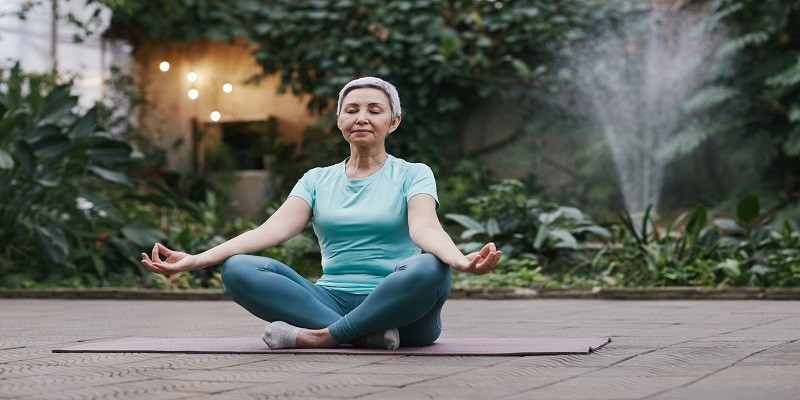Last Updated on July 25, 2023
Exercise can be very challenging for people with heart disease or who are recovering from one. They worry that excessive physical activity may stress their hearts or even trigger another attack.
But fear not! Doctors believe that the right type and amount of exercise is beneficial for heart health, especially for vulnerable hearts. As long as you aren’t hitting the gym with those sweat-breaking, high-intensity workouts, you will probably be okay.
You may want to talk with your doctor about what exercise you can do. But once you have that thumbs-up, it is time to learn about the best exercises scientifically recommended for heart patients.
1. Walking
Just plain, old, simple, boring walking is an excellent way of keeping the heart in good condition. But it turns out that this simple exercise has many more hidden benefits. It can help improve endurance, burn calories, and strengthen your muscles and bones.
If you aren’t used to walking a lot, you can start by just walking around the house. Make more trips carrying the groceries from your car to your kitchen. As you become more confident, move on to short walks around the block and gradually increase your distance and speed as you build your stamina.
The goal should be at least 30 minutes of moderate-intensity walking on most days of the week.
You may want to invite a friend – or friends to join you in your exercise routine for the company and support if needed. Moreover, your friends should tag along if they know CPR to monitor your health.
We also suggest keeping a few essential tools to keep a check on your heart. The AED store has an entire range of such products at competitive prices.
2. Cycling
Cycling is a low-impact exercise that is great for the heart for two reasons: it helps lower your blood pressure while keeping you lean, slim and toned.
You can go to the local gym or get one for your home. If you choose to ride outdoors, try to bike on flat terrain. Parks with bike tracks are good places to start.
Avoid any hills or rough roads that may strain your heart. Start with 10-15 minutes of cycling at a moderate pace, and enjoy the scenery.
3. Swimming
Swimming is an excellent alternative if you can’t walk or swim because of problematic joints. It’s fun, and the water supports your weight, reducing strain on hips, knees, and ankles. It also improves lung function and makes you feel relaxed.
If you’re new to swimming, lessons with a professional instructor are recommended. You can start by floating or doing water exercises, then progress to swimming laps or joining an aqua aerobics class. Begin by swimming for 5-10 minutes and build endurance over time.
4. Yoga
Slow, controlled movements in yoga combined with breathing exercises can help build flexibility, balance, strength, and posture. Studies have shown that certain yoga poses can reduce inflammation, improve cholesterol levels, and lower heart rate and blood pressure.
Meditation during yoga can relieve stress, anxiety, and depression. All these combined are risk factors for heart attacks and strokes.
You may consider joining a beginner-friendly yoga class or an online video at home. All you need is a yoga mat. Start with 15-20 minutes a few times a week, and gradually build up to more complicated poses.
5. Pilates
Pilates is an exercise focusing on core stability, alignment, and breathing. It improves posture, flexibility, strength, and coordination while reducing stress and pain and protecting heart health.
If you are new to Pilates, you might want to join a class or follow videos at home. Start with 10-15 minutes a few times weekly, gradually increasing duration and intensity as the ability grows.
6. Dancing
There are no rules or rhythms to dancing – or maybe there are. You are the judge. Dancing is a fun way to exercise your heart and body. It can help you burn calories, improve mood, boost confidence, and socialize with others.
Begin by dancing at home to your favorite music or joining a dance class matching ability. Any style, from salsa to ballroom to hip hop, offers benefits. Start with 15-20 minutes of dancing 2-3 times weekly. As endurance improves, the duration, intensity, and frequency of dancing workouts increase.
7. Strength training
Strength training, involving resistance to build muscle mass and strength, can provide numerous health benefits. It helps prevent muscle loss and improve metabolism while maintaining bone density and enhancing functional ability.
It is important to consult with a trained professional before starting these exercises. Weights, bands, machines, or your body weight can be used to perform strength exercises targeting different muscle groups.
You should start with light weights or resistance, doing 8 to 12 repetitions of each exercise twice weekly.
8. Gardening
Gardening is an outdoor activity that can provide fresh air, sunlight, and physical activity while beautifying your surroundings. It can help improve endurance, strength, flexibility, hand-eye coordination and relieve stress and depression.
9. Golfing
Golfing can provide numerous health benefits by exercising your heart and body while enjoying the scenery and companionship of others. It can help improve endurance, strength, balance, and coordination.
You can golf on a course or driving range, using a cart, or walking between holes. Begin with nine holes and gradually work up to 18 holes or more.
Conclusion
While following your doctor’s advice, adding any of these exercises to your routine can help strengthen your heart and improve your cardiovascular fitness. Start slowly and build up duration and intensity over time.
Listen to your body and stop if you feel pain, discomfort, or shortness of breath. Remember that consistency is key, so aim for at least 3 to 4 weekly exercise sessions. The benefits of regular exercise will accumulate over time, so stay motivated and committed to a heart-healthy lifestyle.







